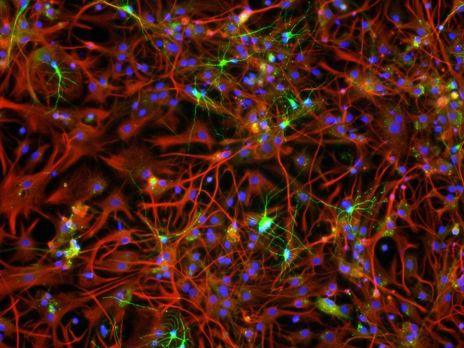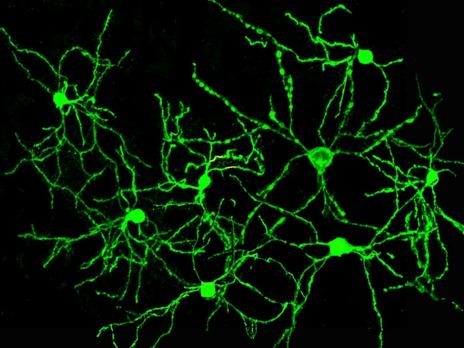
Impact of prenatal stress in the brain: from rodents to humans
Early life adversity can have long lasting consequences for the individual, increasing the vulnerability to develop neuropsychiatric disorders later in life…

2003 – Graduation in Applied Biology
2008 – PhD at University of Minho, Portugal (Patricia Maciel’s Lab) and at David Geffen School of Medicine – UCLA, USA (Dan Geschwind’s lab)
2008 – 2013 Post-doctoral fellow at ICVS/School of Medicine, University of Minho, Portugal (Nuno Sousa’s lab)
2014 – Team leader at ICVS/School of Medicine, University of Minho
My research is focused in unravelling how our brain encodes rewarding and aversive events to drive motivated behaviors.
How do our brains compute that a stimulus is “good” or “bad”? How is valence represented in the mammalian brain? What are the neural substrates underlying a rewarding or an aversive experience? What lies between the stimulus and the behavioural response?
On top of these exciting fundamental neuroscience questions, I am also exploring how early life stress in specific developmental windows can imprint long-lasting marks in these processes, leading to maladaptive behaviours (depression, addiction).
In the last years, my team has been allying fundamental with clinical research, combining rodent and human data, using a variety of techniques to find mechanistic explanations on how reward and aversion are encoded in the mammalian brain (rodents – in vivo electrophysiology, optogenetics, calcium imaging, behavioral evaluation; humans – fMRI, neuropsychological evaluation).
In addition to my scientific and teaching activities, I am also one of the Science Outreach Coordinators of host institution, responsible for science dissemination for the society.

2003 – Graduation in Applied Biology
2008 – PhD at University of Minho, Portugal (Patricia Maciel’s Lab) and at David Geffen School of Medicine – UCLA, USA (Dan Geschwind’s lab)
2008 – 2013 Post-doctoral fellow at ICVS/School of Medicine, University of Minho, Portugal (Nuno Sousa’s lab)
2014 – Team leader at ICVS/School of Medicine, University of Minho
My research is focused in unravelling how our brain encodes rewarding and aversive events to drive motivated behaviors.
How do our brains compute that a stimulus is “good” or “bad”? How is valence represented in the mammalian brain? What are the neural substrates underlying a rewarding or an aversive experience? What lies between the stimulus and the behavioural response?
On top of these exciting fundamental neuroscience questions, I am also exploring how early life stress in specific developmental windows can imprint long-lasting marks in these processes, leading to maladaptive behaviours (depression, addiction).
In the last years, my team has been allying fundamental with clinical research, combining rodent and human data, using a variety of techniques to find mechanistic explanations on how reward and aversion are encoded in the mammalian brain (rodents – in vivo electrophysiology, optogenetics, calcium imaging, behavioral evaluation; humans – fMRI, neuropsychological evaluation).
In addition to my scientific and teaching activities, I am also one of the Science Outreach Coordinators of host institution, responsible for science dissemination for the society.
1. Soares-Cunha et al, Distinct role of nucleus accumbens D2-MSN projections to ventral pallidum in different phases of motivated behavior. Cell Reports (2022)
https://doi.org/10.1016/j.celrep.2022.110380
2. Coimbra et al, Laterodorsal tegmentum–ventral tegmental area projections encode positive reinforcement signals. Journal of Neuroscience Research (2021)
https://doi.org/10.1002/jnr.24931
3. Coimbra B, et al. Role of laterodorsal tegmentum projections to nucleus accumbens in reward-related behaviors. Nature Communications (2019)
https://doi.org/10.1038/s41467-019-11557-3
4. Soares-Cunha C, et al. Nucleus accumbens medium spiny neurons subtypes signal both reward and aversion. Molecular Psychiatry (2019)
https://doi.org/10.1038/s41380-019-0484-3
5. Soares-Cunha C, et al. “Nucleus accumbens microcircuit underlying D2-MSN-driven increase in motivation”. eNeuro (2018)
https://10.1523/ENEURO.0386-18.2018
6. Soares-Cunha C, et al. “Activation of D2 dopamine receptor-expressing neurons in the nucleus accumbens increases motivation. Nature Communications”. (2016)
https://10.1038/ncomms11829
7. Science outreach in national media – Researchers win a millionaire scholarship to study the brain; https://www.rtp.pt/noticias/pais/equipa-da-universidade-do-minho-garante-bolsa-de-2-milhoes-de-euros_v1297263
8. ERC consolidator – Valence; https://cordis.europa.eu/project/id/101003187
9. Science outreach in national media – “Mentes que brilham (Shining minds)” Programe participation https://portocanal.sapo.pt/um_video/zfI00IeO94CMe6ERV3ub
10. Science outreach in national media – Interview about the way our brain encodes positive and negative information – https://observador.pt/2021/03/19/os-neuronios-das-coisas-boas-e-das-coisas-mas/

Early life adversity can have long lasting consequences for the individual, increasing the vulnerability to develop neuropsychiatric disorders later in life…

Since the moment we wake up, we are continuously flooded with sensory information of variable relevance. Therefore, our brains evolved to filter information…

The brain constantly integrates new sensory information, and associates environmental cues to outcomes, adjusting behavior to maximize reward and minimize unpleasant consequences. This process is critical for survival, and its dysregulation is a hallmark of…

Depression affects around 16% of the world population and is the leading cause of disability worldwide. This means that around 300 million people are now living with depression…

Through evolution, animals gained the remarkable ability to respond with sub second precision to environmental stimuli and to learn to associate those with positive or negative outcomes…



Phone: +351 253 604 967
Fax: +351 253 604 809
Email: icvs.sec@med.uminho.pt
Life and Health Sciences
Research Institute (ICVS)
School of Medicine,
University of Minho,
Campus de Gualtar
4710-057 Braga
Portugal

Copyright ©2022 ICVS. All Rights Reserved



Copyright ©2022 ICVS. All Rights Reserved
Life and Health Sciences
Research Institute (ICVS)
School of Medicine,
University of Minho,
Campus de Gualtar
4710-057 Braga
Portugal



Copyright ©2022 ICVS. All Rights Reserved
Life and Health Sciences
Research Institute (ICVS)
School of Medicine,
University of Minho,
Campus de Gualtar
4710-057 Braga
Portugal

